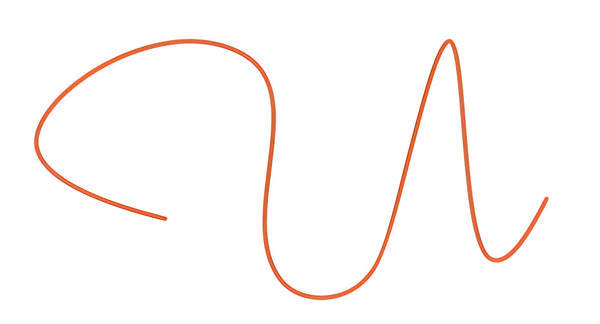
Exploring Regional Styles: Juttis and Khussas from Different Parts of India and Pakistan
India and Pakistan are known for their rich cultural heritage, and among the treasures they share is the intricate footwear known as juttis and khussas. These traditional shoes have been worn for centuries, symbolizing the region's artistry and craftsmanship. From the vibrant streets of Punjab to the deserts of Rajasthan, Punjabi juttis and khussas reflect the diversity and elegance of South Asian fashion. In this blog, we’ll take a journey across the regions to explore the unique styles and cultural significance of juttis and khussas.
The Origin of Juttis and Khussas
The history of juttis and khussas dates back to the Mughal era when royalty would wear elaborately embroidered shoes as symbols of status. These shoes have evolved over time, yet they continue to carry a legacy of sophistication and cultural pride. The difference between juttis and khussas lies mainly in their regional names and subtle design variations.
Punjabi juttis, for instance, are often more colorful and heavily adorned, while khussas, typically from Pakistan, tend to have a sleeker, more traditional look. However, both types share the same basic structure – closed-toe, flat-soled, and often richly decorated with beads, threads, or mirrors.
Punjabi Juttis: A Style Statement from the Heart of Punjab
Punjab, the land of vibrant festivals and rich traditions, is where Punjabi juttis hold a special place in the hearts of the people. These handcrafted shoes are an essential part of any traditional outfit, especially for Indian women.
What makes Punjabi juttis so unique is their intricate embroidery, often featuring bright colors, floral motifs, and metallic threadwork. These shoes are not only worn with traditional outfits like salwar kameez and lehenga, but they have also become a fashion-forward choice, paired with modern attire like jeans and skirts. The versatility of Punjabi juttis has made them a popular choice not just in India, but across the globe.
Khussas: Pakistan’s Cultural Footwear Legacy
The khussa, similar to the juttis, is a traditional shoe often worn in Pakistan, particularly in Punjab and Sindh. What sets the khussa apart is its sleek design and pointed toe, which gives it a more refined and formal appearance compared to the broader styles of Indian juttis.
In Pakistan, khussas are commonly worn by both men and women, and they are often embellished with hand-stitched patterns, sequins, and mirrors. These shoes are frequently made from fine leather and feature intricate, symmetrical designs that are more subdued than the flamboyant Punjabi jutti. They are often paired with traditional Pakistani clothing such as shalwar kameez or lehenga for weddings and formal events.
Regional Variations Across India and Pakistan
Rajasthan: Juttis of the Desert State
Rajasthan, known for its royal heritage, brings a distinct style to its juttis. Here, the shoes are often made from locally sourced leather, dyed in earthy tones, and embellished with unique designs like peacocks, elephants, and camels – motifs reflective of Rajasthan’s cultural icons. The craftsmanship in Rajasthan juttis is often minimalistic, focusing more on the beauty of the leather and fine needlework.
Uttar Pradesh: The Elegant Lucknowi Juttis
The city of Lucknow, famous for its chikan embroidery, brings a delicate touch to its jutti designs. Lucknowi juttis often feature the same chikankari embroidery that the city is famous for, giving the shoes an air of elegance and grace. The pastel shades and light threadwork make these juttis perfect for weddings, formal gatherings, or even casual wear.
Sindh: The Traditional Sindhi Khussas
The Sindhi region of Pakistan is known for its deeply rooted traditions, and the khussas here reflect that cultural heritage. Sindhi khussas often incorporate mirror work, multicolored threads, and geometric patterns that speak to the region’s artistry. These khussas are typically crafted by local artisans using leather and cotton threads, making them durable and long-lasting.
Modern Appeal: Juttis and Khussas in Contemporary Fashion
While traditionally worn for weddings, festivals, and formal occasions, juttis and khussas have found their way into everyday fashion. Indian women often choose Punjabi juttis for their versatility and comfort, pairing them with both ethnic and Western attire. Similarly, khussas are popular choices for both men and women, offering a blend of cultural heritage and modern style.
Designers have also begun incorporating juttis and khussas into high fashion, experimenting with new materials, bold colors, and contemporary designs. Whether adorned with pompoms, tassels, or minimalist patterns, these shoes are a testament to the rich, evolving tradition of footwear in India and Pakistan.
Caring for Your Juttis and Khussas
Given their intricate designs and delicate materials, it’s essential to care for your juttis and khussas properly. Most of these shoes are made from leather or fabric, so avoid contact with water to prevent damage. Store them in a cool, dry place, and clean them gently using a soft cloth. With proper care, these shoes can last for years, allowing you to enjoy their beauty for every occasion.
Conclusion: A Cultural Footwear Legacy
Whether it’s the vibrant Punjabi jutti from India or the elegant khussa from Pakistan, these traditional shoes are more than just fashion statements—they are symbols of cultural pride and craftsmanship. Their growing popularity worldwide is a testament to the timeless appeal of South Asian footwear. From weddings to casual outings, juttis and khussas add a touch of heritage and style to any outfit.
So, the next time you're shopping for shoes, consider adding a pair of Punjabi juttis or khussas to your collection. Not only will you be embracing a rich cultural tradition, but you’ll also be stepping out in style!
